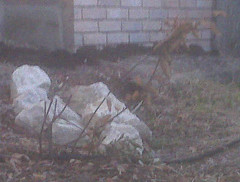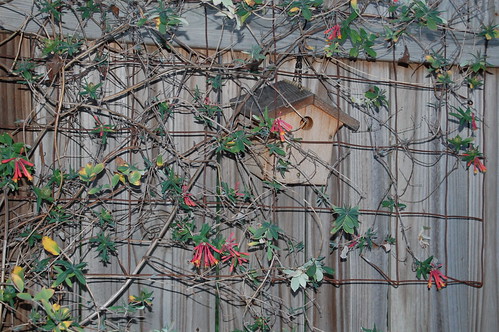
Narcissus. I bought this variety because it is one of the few that naturalizes in South Texas. They are doing great in the front yard, but I've decided that I'd appreciate the bulbs more if they were in the backyard so I am going to move them when the foliage dies back.

I've never featured sandankwa viburnum on my blog because it has never done anything noteworthy. Well, I take that back.


It has nearly died twice from drought stress and come back from a tiny sprout that was only an inch tall. Twice. (Documented in the pathetic old phone photos above.) I planted three sandankwa in dry shade in 2008. They had a very hard time getting established during the drought. Any new plant would struggle under the record heat and dryness, but viburnums let you know about every second of their agony. You can't make it up to them with a big drink of water after they've started to fry. You have to wait out the hot season until it's time for them to put on new growth. In the meantime, you have to live with crispy-edged leaves. While you wait, more likely than not, the crispiness will creep backwards, down to the heart of the leaf and into branches until the plant has retreated to its roots.
Considering how near to death the viburnum have been and their inhospitable living arrangements, I would have been happy if all they accomplished this year was to grow back to the size they were when I planted them.

Coral honeysuckle has started to bloom and fill in with foliage again.

A brought a little of the outdoors in using blooms that needed to be trimmed anyway to shape the plants or stems that I accidentally damaged. Archduke Charles rose buds, salvia greggii and narcissus.
No comments:
Post a Comment